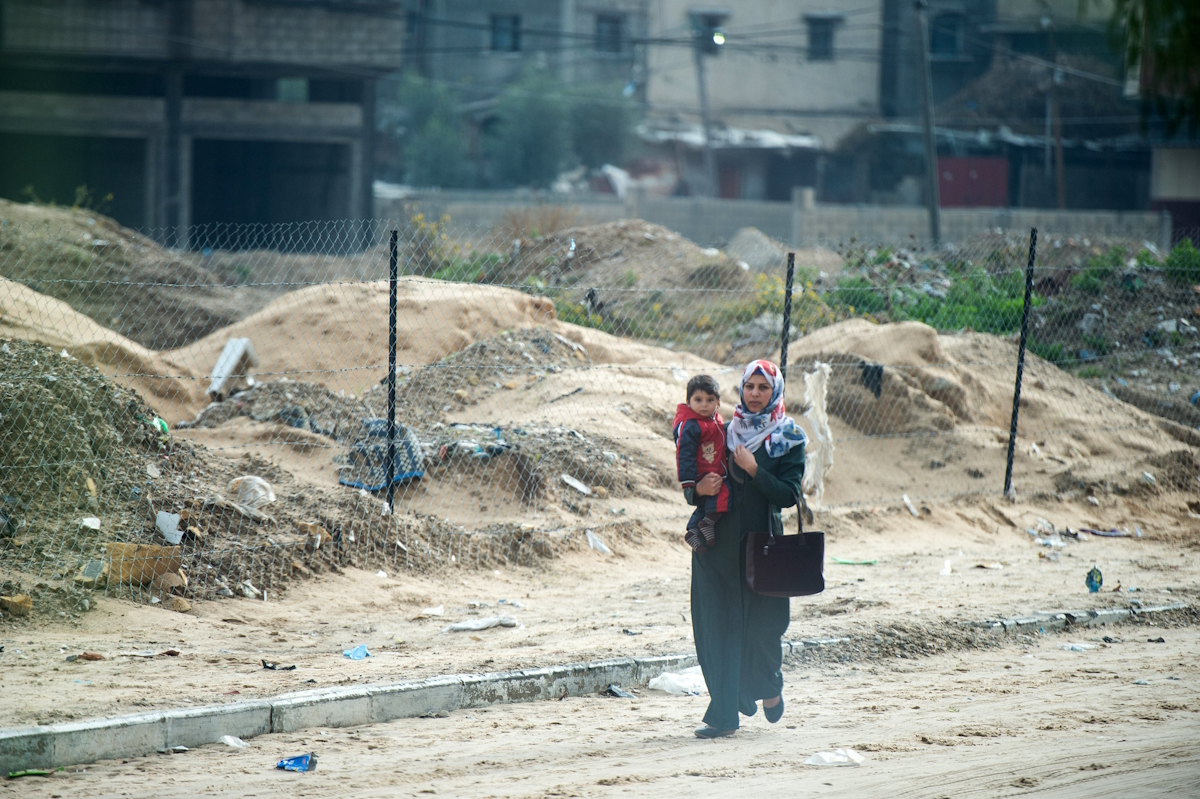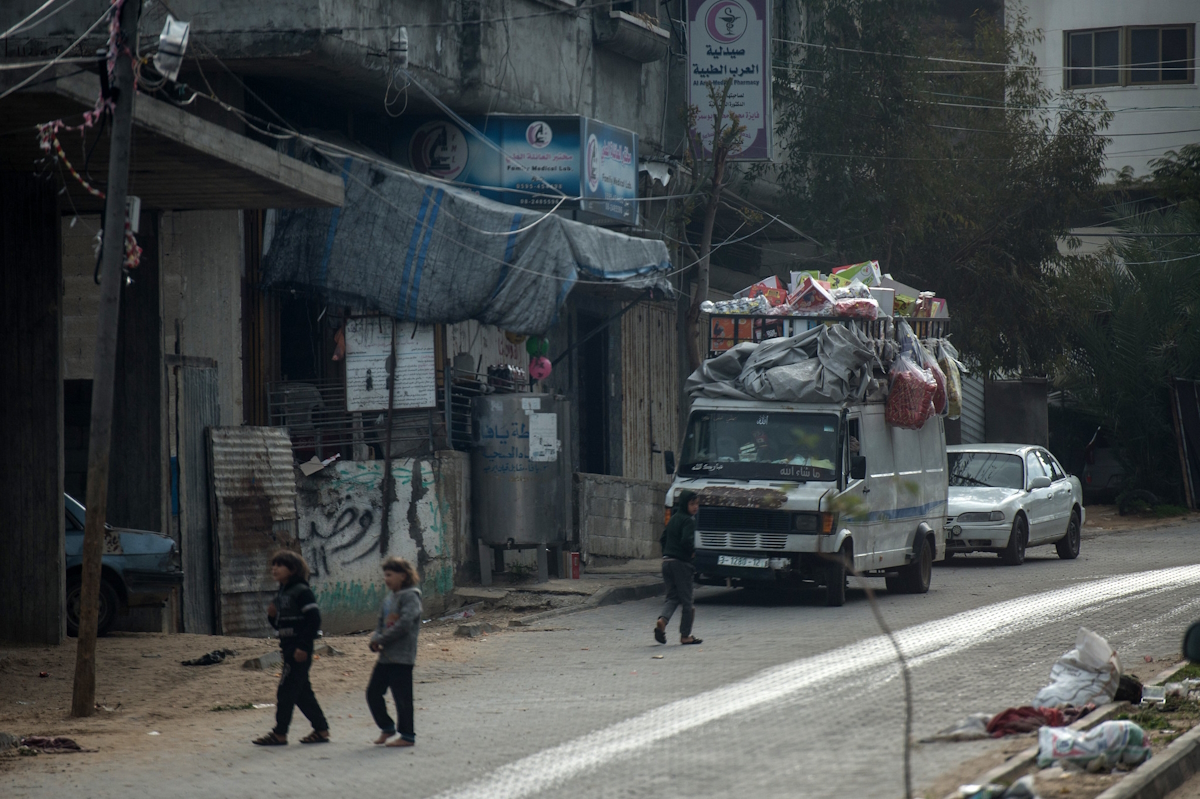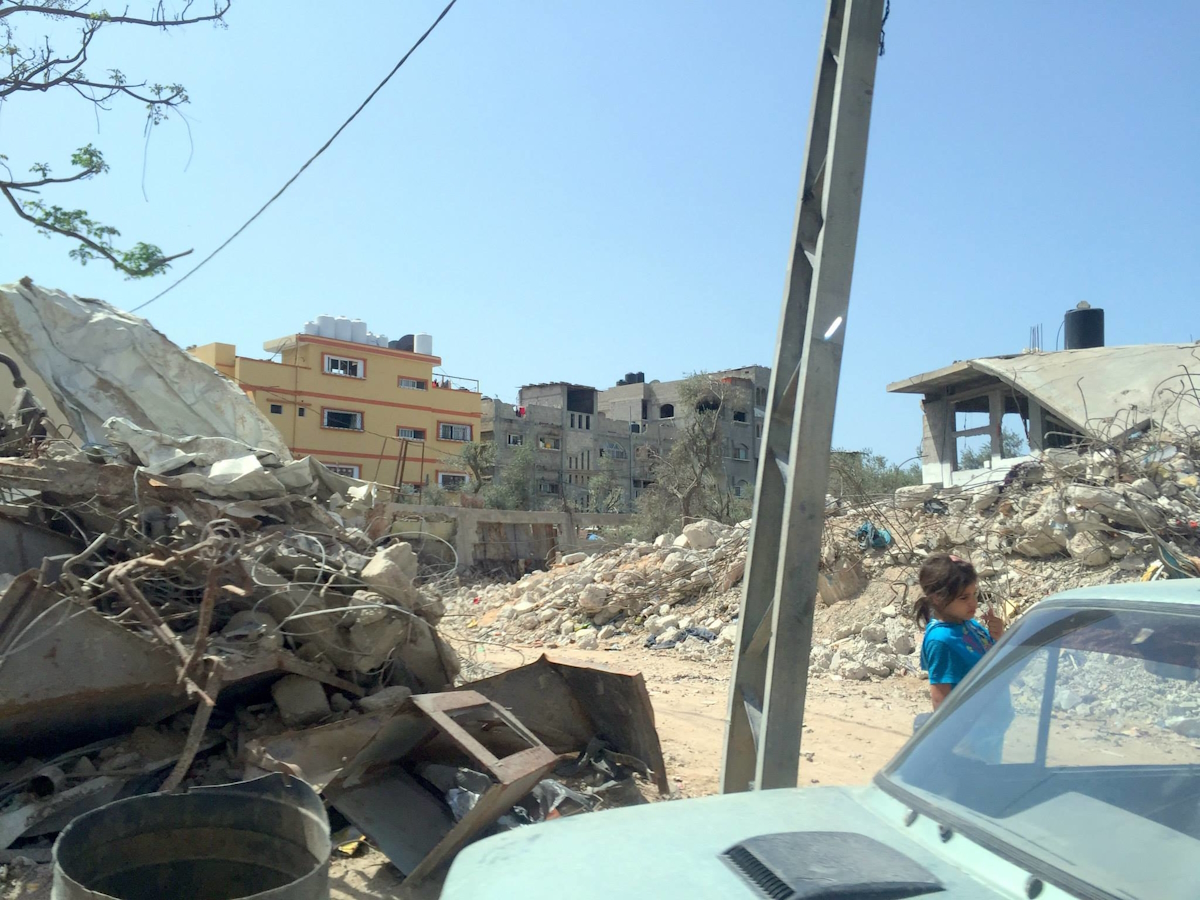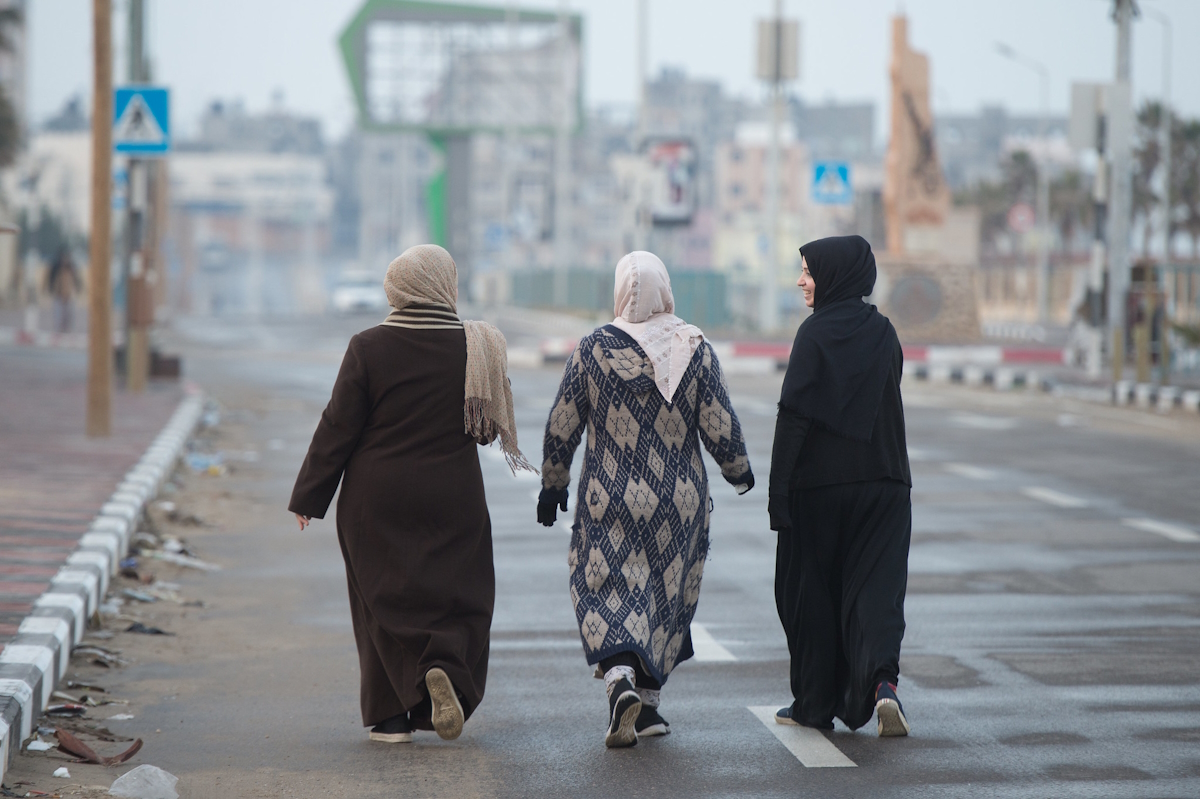Since the electoral victory of Hamas in 2007, the State of Israel has steadfastly maintained a comprehensive blockade of the Palestinian territory of Gaza, extending to its terrestrial, maritime, and aerial domains. As of today, the region grapples with an alarming 50% unemployment rate, wherein a staggering two-thirds of its inhabitants are reliant on humanitarian aid for their basic sustenance, confronted with persistent shortages of electricity and water resources

In this tumultuous context, the actions of Hamas, the ruling authority in Gaza, have grown progressively audacious. Border crossings have been transgressed, vehicles have been employed as battering rams, barriers have been forcefully dismantled, paragliders have penetrated Israeli airspace, military installations and rural communities have been seized, urban streets have borne witness to acts of violence, and even a tragedy unfolded at a public gathering. Moreover, hundreds of Israeli citizens have been taken hostage and thousands of rockets have been launched from Gaza into Israel. In response to this evolving crisis, the international community remains relatively reticent, offering myriad interpretations of recent events.
However, an enduring and fundamental explanation for these developments, persistent since 2007, is the unremitting siege imposed on Gaza by Israel, which serves as a crucible for the escalation of frustration and despair.
Notably, observers well-acquainted with the region express astonishment not at the substance of these actions, but rather at their scale and intensity. Gaza has, over the years, evolved into a pressure cooker, where militant groups have steadily gained prominence, capitalizing on the blockade and a series of military operations undertaken by the Israeli Defense Forces. This has allowed them to draw closer to a population enduring conditions of extraordinary duress. To be precise, Gaza’s inhabitants are, quite literally, at the brink of their endurance.
For some weeks, violent protests, particularly a remarkable uprising, have been transpiring in the region. These events not only targeted the blockading nation, Israel, but also embraced two pivotal elements that now define the ongoing crisis: the assertion of Palestinian rights to the Al Aqsa Mosque in Jerusalem, a third-holiest site in Islam, juxtaposed with the Jewish claims to the Temple Mount, and the demand for the release of Palestinian prisoners held in Israeli correctional facilities. It is, indeed, the latter demand that the militant groups are emphasizing as a condition for the liberation of the hostages, encompassing both civilians and military personnel, who were taken during their recent incursion onto Israeli territory.
Hamas actively encouraged the protests on this front. However, it is crucial to acknowledge that the uprising was also underpinned by a pronounced alarm about the dire economic conditions prevailing within the enclave. These economic hardships are largely attributed to the protracted Israeli blockade. The slogan «We want to live,» repeatedly resonating across social media platforms, attests to this profound yearning. It encapsulates the profound sentiment of deprivation among Gaza’s Palestinian residents. Hamas spokesperson Hazem Qasem affirmed to the EFE news agency that «Gaza is at rock bottom,» underscoring the current situation’s combustible nature. This sentiment culminated in a violent outburst on August 2nd, 2023.

One anonymous Israeli official, speaking to Reuters, elucidated the underlying motives behind the protests, characterizing them as predominantly economic in nature. As he remarked, «What we are seeing at the (border) fence is a message. They are asking for economic aid.» These movements entailed instances of stone-throwing youths and improvised explosive devices, clashing with Israeli forces along the border, leading to lethal responses. Eventually, the involvement of Egyptian, UN, and Qatari negotiators succeeded in restoring a degree of calm.
Gaza, with its constrained geography, houses a population of approximately 2.2 million, experiencing one of the highest population densities globally. Per capita income in this region stands at a mere quarter of that in the Israeli-occupied West Bank. Grimly, over half of Gaza’s population languishes below the poverty threshold, according to estimates by the International Monetary Fund (IMF). Even the United Nations Relief and Works Agency for Palestine Refugees in the Near East (UNRWA) is stretched to its limits in providing humanitarian support. Roughly two-thirds of Gaza’s residents depend on such aid for their very survival, and unemployment affects half of its population, surging to three-quarters among its youth.
In light of these challenges, sources closely associated with mediation efforts in the region revealed that, while some of Hamas’s demands bore political significance, the relaxation of economic sanctions was perceived as pivotal in maintaining border stability. Hamas leaders contended that Gaza’s tranquility would remain precarious unless Israel lifted the blockade and ceased its «aggressive measures and assaults in the West Bank and Jerusalem.» Yet, they appeared disinclined to initiate a new conflict.
Although it was anticipated that Israel, in conjunction with Egypt, which jointly maintains the blockade, would announce further relaxations, such actions were not forthcoming in the midst of the crisis. It is worth noting that Hamas and allied militias unleashed their attacks on the 50th anniversary of the Yom Kippur War, a period when Israel was celebrating the festival of Sukkot. This decision reflects the prevailing state of affairs, which militates in favor of these entities, as they do not anticipate robust retaliation in the present context.
A recent report by the International Monetary Fund emphatically underscores that the paramount prerequisites for fostering a stable, long-term economic recovery in Gaza hinge upon the removal of the blockade and the amelioration of the stringent restrictions imposed by Israel. This report accentuates the substantial economic disparities between Gaza and the West Bank over the past 15 years, largely stemming from Gaza’s isolation and a series of recurrent conflicts that followed Hamas’s ascendance in 2007. Notably, it underscores that approximately 77% of households within Gaza rely on external assistance, primarily in the form of financial aid and food supplies.
A poignant declaration by the United Nations characterizes this situation as a «collective punishment.» Commencing in 2021, following a ten-day confrontation with Hamas, Israel did institute some measures aimed at easing conditions in Gaza. These included the issuance of several thousand work permits (approximately 18,000), initiatives to facilitate exports, and the enhancement of public services, which had suffered from protracted neglect. However, these measures, while providing an influx of approximately two million dollars per day, and other forms of economic relief, remain insufficient. Today, according to Save the Children, Israel continues to deny permission for approximately two children per day to exit Gaza for medical treatment, embodying the gradual, debilitating impact of this ongoing situation.

The State of Israel maintains its position that it does not occupy the Gaza Strip, a stance rooted in the evacuation of the last troops and approximately 7,000 settlers from the territory in 2005. However, the ambit of international law delineates a broader interpretation of «occupation» than merely the presence of military forces within a given territory.
In the case of Gaza, Israel may not have a military presence within, but it extensively regulates and controls the land border, a security zone, and its environs – notably, a buffer zone that seizes land designated for agriculture and housing, further impoverishing the local populace. Israel similarly supervises the coastal region, imposing restrictions on fishermen regarding permissible distances from the shore, and manages the airspace, effectively prohibiting any aerial activity. It also exercises authority over the opening and closing of border crossings, with the exception of one controlled by Egypt to the south, which remains largely inoperative. Furthermore, Israel retains control over the ingress of materials and has the capacity to oversee telecommunications, frequently opting to restrict these channels.
The cumulative effect of these measures effectively paralyzes a region that is in a state of profound disconnect from other Palestinian communities, particularly those in East Jerusalem and the West Bank, thereby resulting in familial and cultural ruptures. Gaza is emblematic of a slender, coastal expanse, approximately 40 kilometers in length and 15 kilometers in width, accommodating a population of 2.2 million individuals. This territory ranks among the most densely inhabited places globally, with an astonishing 9,000 residents per square kilometer. Furthermore, 1.3 million of its residents are refugees who sought sanctuary in the area following the wars with Israel in 1948 and 1967.
Data provided by the United Nations Relief and Works Agency for Palestine Refugees in the Near East (UNRWA) underscores the devastating consequences of the blockade. Alarmingly, 90% of the water is deemed unfit for human consumption, nearly 60% of households grapple with food insecurity, and the UN’s prior projection, asserting that Gaza would become «uninhabitable» by 2020, has long been surpassed. As the UN observes, «The blockade continues to have a devastating effect, as the movement of people to and from the Gaza Strip, as well as access to markets, remains severely restricted. The economy and its ability to create jobs have been devastated.»
Regrettably, Israeli Defense Minister Yoav Gallant recently announced a comprehensive blockade of the Gaza Strip, which will result in the isolation of the Palestinian enclave from vital supplies of electricity, food, and fuel. Gallant’s statement underscores the punitive nature of this measure, given that he declared, «There will be no electricity, no food, and no fuel.»
Notably, in the period preceding the Protective Edge offensive by Israel in 2014, which claimed over 2,300 lives, the UN was already decrying a substantial deficit of 400 schools, 800 hospital beds, and more than 3,000 medical professionals. Following this offensive, which witnessed the destruction of 17 hospitals, 56 clinics, 45 ambulances, and numerous educational institutions, the region’s reconstruction efforts encountered formidable obstacles. A multitude of international non-governmental organizations has decried the fact that not even 60% of the funds pledged by nations to facilitate Gaza’s recovery have materialized.
The importation of construction materials remains one of the principal barriers imposed by the blockade. UNRWA has documented the hindrance posed by this issue, stating that it obstructs the reconstruction process, as approvals for imports are protracted and limited to projects overseen by the UN, excluding the cash assistance program for refugees to rebuild their own dwellings. Pertinently, these refugees are recipients of UN support.

Furthermore, the inability to export goods or engage in commerce, encompassing commodities such as oranges and the renowned Gaza strawberries, underscores the economic impotence of the region. Gaza is enveloped in an environment where Israeli drones persistently patrol the skies, while maritime surveillance is conducted by the Israeli navy, and fishermen face restrictions on their catch. Regrettably, the fishing area has been severely curtailed to 12 miles, but it regularly reverts to just six or four miles, contingent on Israeli decisions, thus depriving Gazan fishermen of access to approximately 85% of waters they are entitled to, as stipulated by the Oslo Peace Accords. The adverse effects of these constraints on economic life are palpable, particularly within the manufacturing and agricultural sectors, historically the economic engines of Gaza.
The precarious state of affairs, characterized by a relentless state of attrition, has precipitated a disconcerting trend of approximately 600,000 Gazans, including children and youth, exhibiting symptoms of acute distress and manifesting mental health issues. Yet, treating these mental health problems confronts myriad challenges, owing to the scarcity of qualified professionals and the prohibitive costs associated with treatment. In actuality, the costs of treatment often remain elusive, in an environment where the strip contends with a 30% deficit in the availability of medicines and medical supplies, a figure that escalates to 60% during Israeli offensives. This pervasive inadequacy includes a chronic shortfall in cancer treatment, exacerbated by the onerous process of securing Israeli permits for medical care in East Jerusalem or the West Bank, undermining the prospects for recovery.
The Israeli government has consistently defended its position, asserting that Gaza does not suffer from shortages. This claim is, indeed, factual, as supermarkets within the territory are well-stocked with a diverse array of products. Nevertheless, this abundance remains largely inaccessible to Gazans, given their dire impoverishment. Furthermore, the inability to develop a local industry or engage in research, due to Israel’s concerns about dual-use items that could potentially harm its interests, necessitates the importation of goods from Israel. This practice raises costs and perpetuates the economic asymmetry.
The civil movement BDS (Boycott, Divestment, Sanctions), which advocates for increased economic and political pressure on Israel, has reported that a significant portion, at least 45%, of international aid ends up being channeled into Israeli hands. These funds are absorbed by companies on the Israeli side of the border, which subsequently engage as contractors for activities within Gaza. These endeavors span the realms of cement production, brick and cable manufacturing, telecommunications, water purification, and sanitation, which are also implicated in illegal settlements in the West Bank and East Jerusalem.
At present, the region anticipates the prospect of an Israeli ground offensive, a development that augments existing concerns of devastation. Gaza remains steeped in hopelessness, enduring not only its past tribulations but also the ongoing ordeal, bleeding once more.
